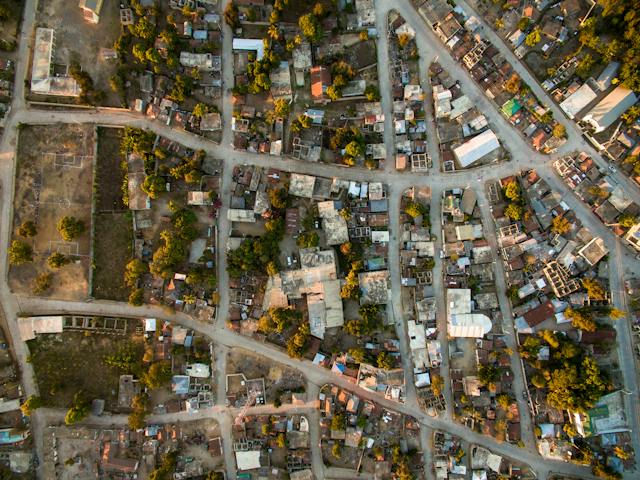
Why is there such a difference between Haiti and the Dominican Republic? There are several reasons. Some of them are the climate, their history, their languages, their population densities, and their governments.
Haiti and the Dominican Republic are both on the island of Hispaniola, which is an island between Puerto Rico, Jamaica and Cuba. It is equidistant between Venezuela and Florida. The island is split into Haiti and the Dominican Republic, but it is not split exactly in half. Haiti has an area of 27,750 km2 and the Dominican Republic has an area of 48,440 km2, making it a roughly 36:64 split. Despite being on one island, the two countries are vastly different. Haiti has a per capita GDP of $2,125 (172nd in the world) and the Dominican Republic has a per capita GDP of $27,231 (67th in the world). In the Dominican Republic average life expectancy is 74 years and in Haiti it is 61. If both countries are on the same island, why is there such a difference between them?
One of the biggest differences between the two countries is their climates. The rain that falls on Hispaniola blows into the country from the east, on the trade winds out of the Pacific Ocean. There is a range of mountains that stretch across Hispaniola, almost cutting the island in two. Haiti is on the western side of these mountains. When the rain clouds blow in, they have to rise to go over the mountains, and so they drop most of their rainfall on the Dominican Republic before they can do so. This means the Dominican Republic has more rain, thicker and more fertile soils, and is a much more conducive environment for agriculture. Conversely, Haiti is drier and far less fertile.
However, the climate difference aside, the origins of the gap between the two countries comes down to, like so many other things, European colonialism. Hispaniola was first inhabited by people about 7,000 years ago. They had grown into five different tribes when Christopher Columbus landed there in 1492, on his way to find a passage to India. The Spanish quickly realized that Hispaniola was in a very convenient location as a stopping off point to their colonies that they were building in South America. They also realized that Hispaniola was rich in gold and other resources. Over the next few centuries they built a colony in the east of the island, built a military garrison, and enslaved most of the local people to dig for gold. In the 15th century, they introduced sugarcane and shipped African slaves across to work the new plantations.
In the 17th century, French and English pirates in the Caribbean founded a town on the west coast of Hispaniola. The French ended up taking control and, after several fights, Spain ceded the western side of Hispaniola to France. The French imported more sugar, coffee, more slaves, and cut down many of the trees in the western side to make space for it. They sold this lumbar in Europe and the profits from western Hispaniola soared. And herein lies many of the reasons for the disparity between Haiti and the Dominican Republic.
Haiti started off as more profitable and more economically sound that the Dominican Republic because of the French trade in these resources. However, after a while, the land had been deforested and the markets for coffee and sugar started to decline. Haiti had nothing to trade with and had no real way of making sustainable agriculture. The Dominican Republic, on the other hand, started off worse, but over time managed to make a sustainable agriculture and to find many resources to trade with. The language barrier was a factor as well. The people in the Dominican Republic spoke Spanish and were able to trade with a large number of countries. The people in Haiti spoke a creole French, which not many people outside the country could speak. France was a cause of the disparity as well, because they not only took everything they could out of Haiti, but they also made Haiti pay a large sum of money every year.
As with many poor countries, Haiti has a much higher birthrate than the Dominican Republic, which has led to a high population density. Both countries have around 11 million people, but Haiti is much smaller than the Dominican Republic. It is difficult to feed and employ so many people.
The stability of the government is a factor. After various revolutions and rebellions, the Dominican government has settled down as a stable and reliable democratic government. This encourages trust in the country, which brings in investment. The Haitian government is trying to become democratic, but it has a way to go. There have been 32 coups in the country and the government is far from stable. This situation causes a circle where the gap between the two countries increases. The Dominican Republic is seen as stable, which brings more investment and trade, which increases its prosperity. Haiti is not seen as stable, which means there is less investment, which increases its lack of poverty. The gap slowly widens. And this is what I learned today.
Photo by Kelly : https://www.pexels.com/photo/aerial-photography-of-assorted-color-buildings-2898214/
Sources
https://en.wikipedia.org/wiki/Dominican_Republic
https://en.wikipedia.org/wiki/Haiti
https://www.theglobalist.com/haiti-and-the-dominican-republic-one-island-two-worlds/
https://en.wikipedia.org/wiki/Hispaniola
https://content.time.com/time/world/article/0,8599,1953959,00.html
